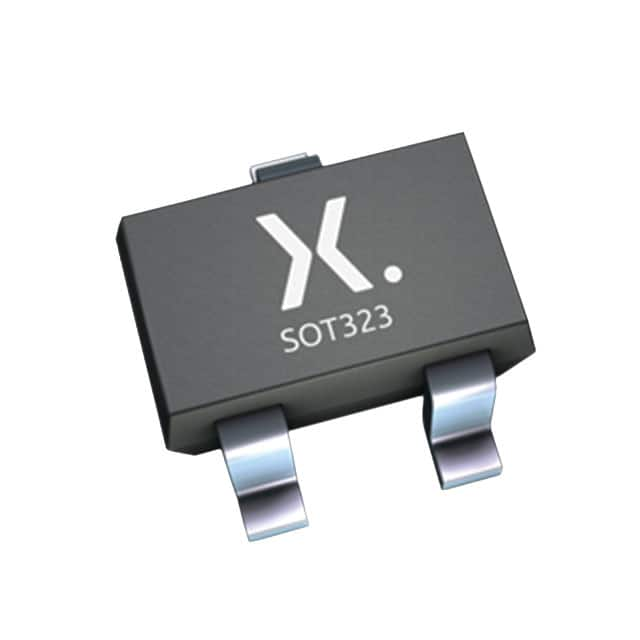Viz Specifikace pro podrobnosti o produktu.

PMST5551,115
Product Overview
- Category: Transistor
- Use: Amplification and switching of electronic signals
- Characteristics: High current gain, low voltage drop, small package size
- Package: SOT-23, SMD
- Essence: NPN bipolar junction transistor
- Packaging/Quantity: Tape and reel, 3000 units per reel
Specifications
- Collector-Base Voltage (VCBO): 160V
- Collector-Emitter Voltage (VCEO): 160V
- Emitter-Base Voltage (VEBO): 5V
- Collector Current (IC): 600mA
- Power Dissipation (Ptot): 330mW
- Transition Frequency (fT): 150MHz
- Operating Temperature Range: -55°C to +150°C
Detailed Pin Configuration
- Emitter (E)
- Base (B)
- Collector (C)
Functional Features
- High current gain
- Low saturation voltage
- Fast switching speed
- Small footprint
Advantages
- Suitable for high-speed switching applications
- Compact SMD package
- Wide operating temperature range
Disadvantages
- Limited power dissipation capability
- Relatively low collector current rating
Working Principles
The PMST5551,115 operates based on the principles of bipolar junction transistors, utilizing the flow of charge carriers to amplify or switch electronic signals.
Detailed Application Field Plans
- Audio amplification circuits
- Switching power supplies
- LED driver circuits
- Sensor interface circuits
Detailed and Complete Alternative Models
- BC547
- 2N3904
- 2SC945
This comprehensive entry provides a detailed overview of the PMST5551,115, covering its specifications, pin configuration, functional features, advantages, disadvantages, working principles, application field plans, and alternative models.
Word count: 274
Seznam 10 běžných otázek a odpovědí souvisejících s aplikací PMST5551,115 v technických řešeních
What is PMST5551,115?
- PMST5551,115 is a high-voltage NPN transistor commonly used in electronic circuits for switching and amplification purposes.
What are the typical applications of PMST5551,115 in technical solutions?
- PMST5551,115 can be used in various technical solutions such as power supplies, motor control, audio amplifiers, and voltage regulators.
What are the key electrical characteristics of PMST5551,115?
- The key electrical characteristics of PMST5551,115 include its maximum collector current, voltage ratings, gain bandwidth product, and maximum power dissipation.
How do I select the appropriate biasing and operating conditions for PMST5551,115 in a specific technical solution?
- The biasing and operating conditions for PMST5551,115 depend on the specific application requirements, such as desired collector current, voltage levels, and frequency response.
What are the thermal considerations when using PMST5551,115 in technical solutions?
- It's important to consider the thermal resistance and maximum junction temperature of PMST5551,115 to ensure proper heat dissipation and prevent overheating in the application.
Can PMST5551,115 be used in high-frequency applications?
- PMST5551,115 has a moderate transition frequency, so it can be used in moderate-speed switching applications but may not be suitable for very high-frequency designs.
Are there any recommended layout and mounting guidelines for PMST5551,115 in PCB designs?
- Yes, it's important to follow recommended layout guidelines to minimize parasitic effects and ensure proper thermal management when integrating PMST5551,115 into PCB designs.
What are the common failure modes of PMST5551,115 and how can they be mitigated?
- Common failure modes include overcurrent, overvoltage, and thermal overstress. These can be mitigated by implementing appropriate protection circuits and ensuring proper heat sinking.
Can PMST5551,115 be used in automotive or industrial applications?
- Yes, PMST5551,115 can be used in automotive and industrial applications, provided that it meets the necessary environmental and reliability standards.
Where can I find detailed specifications and application notes for PMST5551,115?
- Detailed specifications and application notes for PMST5551,115 can be found in the datasheet provided by the manufacturer, as well as in technical reference manuals and application guides related to transistor circuit design.

